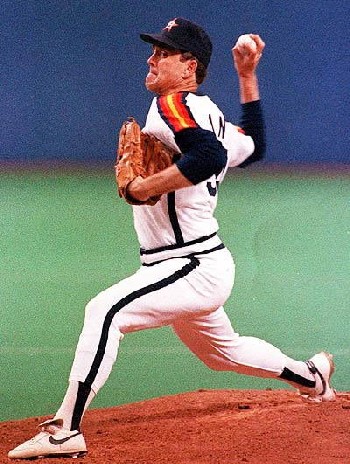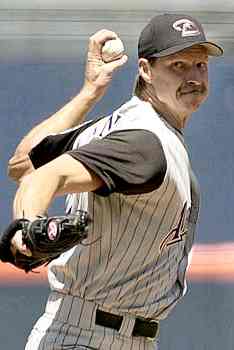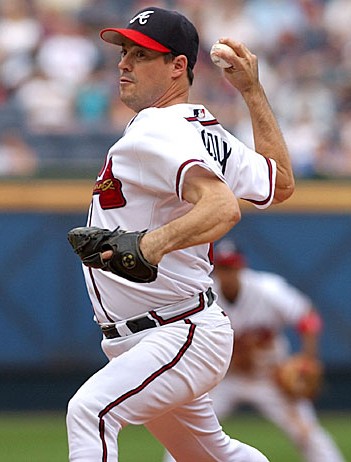When all else fails baffle them with BS....
TPG said:
quote:
Power is generated by stretching the muscles of the core a second before they contract. This is known as the Stretch Shortening Cycle. It increases the power of a muscle.
Not true at least not in a practical sense. Power is defined as rate of work performed. Work as applied to moving an object such as a baseball can be defined as applying force over a distance. Power is the quantity of work performed per unit of time. The power of a muscle is simply the ability of the muscle to produce force through a movement (distance) over some period of time.
The stretch shortening cycle action (eccentric muscle action) action produces negative power, negative power being work performed in the opposite direction of the subsequent contraction. This assumes that positive work is defined as work which takes place in the direction of the subsequent concentric muscle action (subsequent to the stretch shortening action).
From: Biomechanics in Sport: Performance Enhancement and Injury Prevention By Vladimir M. Zatsiorsky
quote:
Intensity (or the rate) of eccentric action can be conveniently defined as the product Pm = Fm x V, . where F. is muscle force applied to the load, Vm is muscle velocity (or the component of velocity at the point of force application along the line of muscle action), and Pm is power produced by muscle force (or muscle power). If force Fm is smaller than the weight of the load Fr, the load will be moving in the direction opposite to the exerted muscle force (i.e. in a negative direction). In this example, muscle will be performing eccentric action, and muscle power will be negative (Fig. 4.1a). The amount of eccentric action can be defined as the time integral of muscle power Pm, which equals negative work done by the muscle force, Wm By similar methods, the rate and amount of concentric action can be defined as positive muscle power and positive muscle work, respectively (the product Fm x Vm is positive because Vm has the same positive direction as Fm; Fig. 4.lb). If muscle force does not produce power and does no work (i.e. the muscle force is equal to weight of the load and 1/m=0; Fig. 4.Ic), the muscle performs isometric action.
All of which is to say that power is simply a matter of applying force over a distance over a period of time. Power is NOT stretch shortening cycle. The stretch shortening cycle may help to increase power. But any muscle group that creates force over a distance over a period of time produces power. Saying that power is only generated or is exclusive to a certain group of muscles is misleading.
Based on the principle of the kinetic sequence or kinetic chain, every segment in the kinetic chain (toes to fingertips) contributes to throwing power. And like any chain the strength of that chain is only as strong as its weakest link. And in reality the link that has the greatest responsibility for power production as defined by applying force to the baseball is the arm complex, i.e. the final link in the chain.
Empirically (common sense?) this is borne out by the number of arm injuries as compared to the number of midsection injuries i.e. injuries to the muscles/connective tissues of the shoulder-elbow as compared to the number of injuries to muscles/connective tissues out of the hips-upper torso.
Next time more baffle them with BS:
TPG said:
quote:
The strides converts linear motion into rotational motion.














